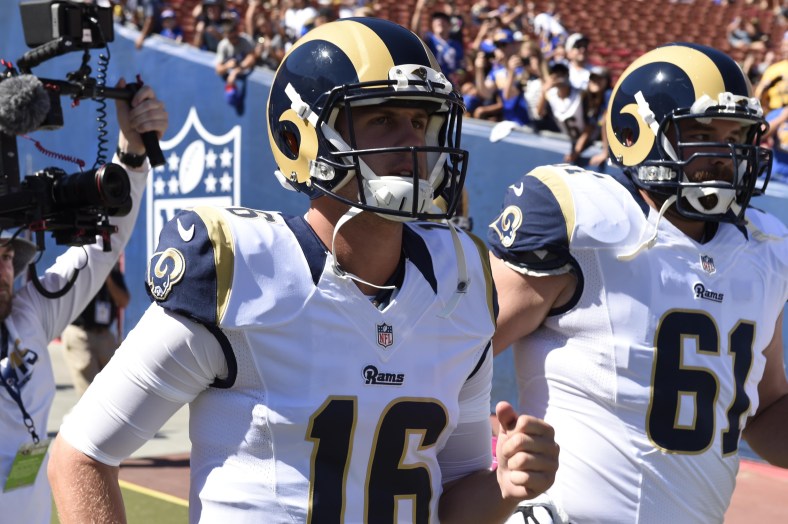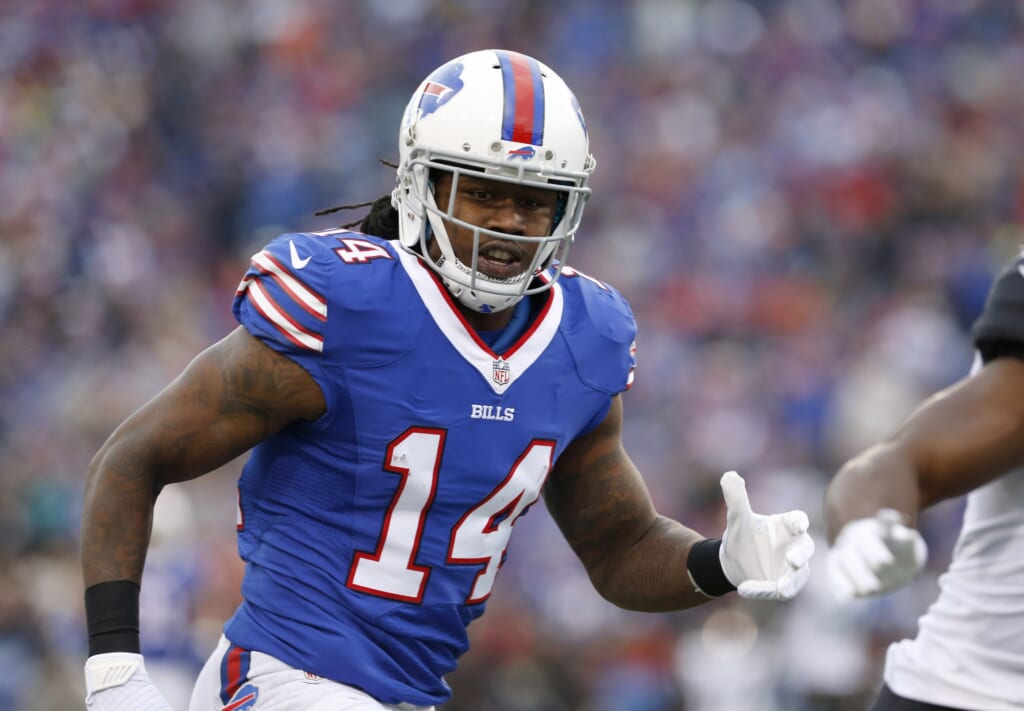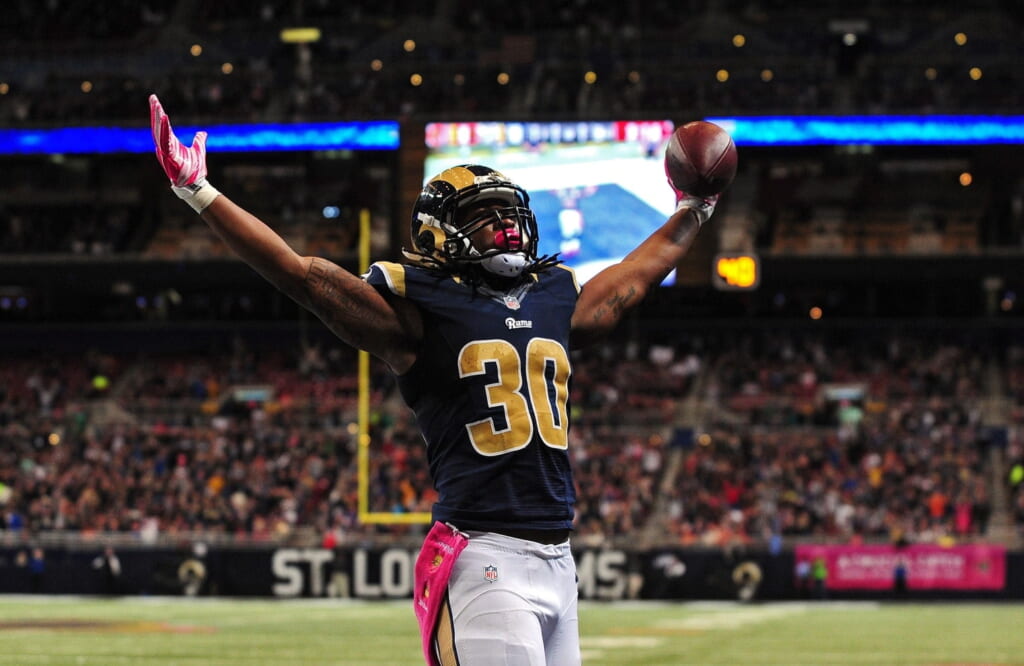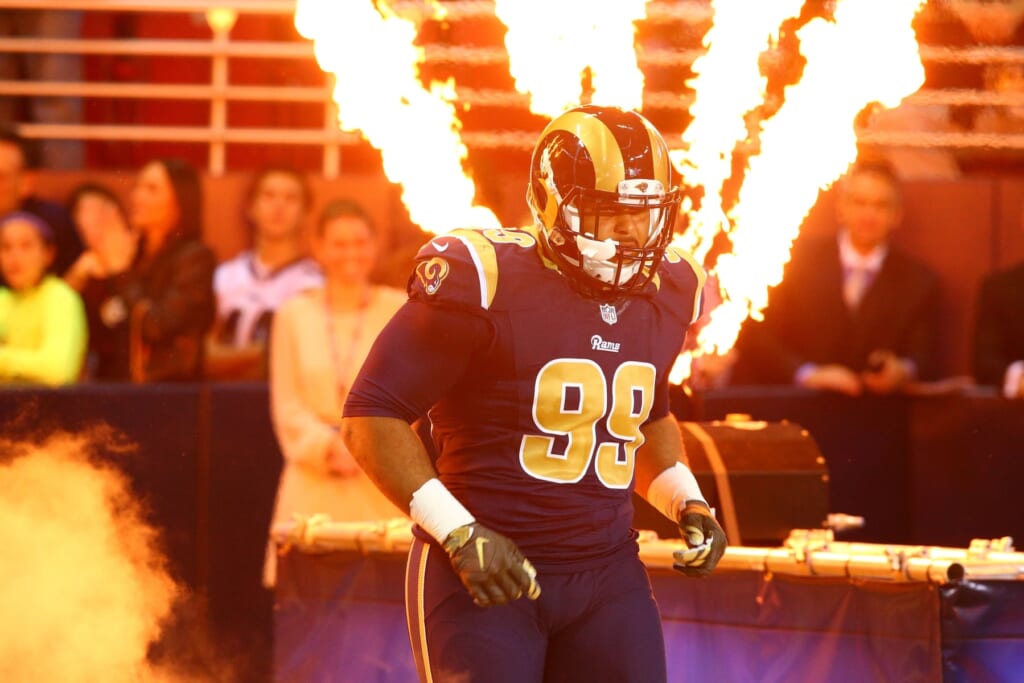
The Los Angeles Rams made a huge investment in quarterback Jared Goff last season, trading up to pick him with the first overall pick in the draft. A year in, they have yet to see the returns.
Goff played just seven games last season. Case Keenum started 2016 as the starting quarterback. Goff and now ex-head coach Jeff Fisher should be under equal indictment for that. Keenum played horribly, but so did Goff once he got the chance.
Thirty-four quarterbacks threw enough passes to qualify for DYAR and DVOA rankings, and Jared Goff was dead last in both by huge margins (-881 DYAR and a -74.8 percent DVOA). Brock Osweiler, who ranked 33rd in both categories, had -558 DYAR and -26.8 percent DVOA. In other words, Goff was so bad that his numbers seem like a typo. He consistently missed easy throws, didn’t seem to know what to do with his feet and was just all-around bad in every way.
Faced with the possibility that they had gone all-in and landed a bust, the Rams decided that Goff’s supporting cast was actually the party at fault. This is probably true, at least partially. The Rams ranked 29th in adjusted sack rate and 29th in adjusted line yards. They were 32nd in rushing DVOA (despite Todd Gurley winning Offensive Rookie of the Year in 2015), and their leading receiver was Kenny Britt.
Nobody will mistake their reworked offense around Goff as championship caliber. However, the Rams did put together a unit that can at least be described as respectable. The final piece in that puzzle was put in place last week when the Rams traded for Sammy Watkins. If Watkins stays healthy — he played just eight games last season — he is a legitimate No. 1 receiver. At 16.1 yards per reception over his career, Watkins is a solid deep threat. In 2015, his last full season, he ranked sixth among receivers in DVOA and ninth in DYAR. At age 24, he could still get better, and if the Rams can keep him after his rookie contract expires, Watkins could be their best receiver for a long time.

Alongside Watkins, there will be two more new faces, the first being his former teammate in Buffalo, Robert Woods. The second is Cooper Kupp, a third round pick out of Eastern Washington.
Neither of these players will be stars. Woods is a solid possession receiver whose 67 percent catch rate last season is his best attribute. For the most part, he’s an average receiver, which constitutes a huge upgrade for the Rams. Kupp projects as a slot receiver in the long term. He has great hands and looks to be a decent, though imperfect, route runner. He had a 76 percent catch rate at Eastern Washington last season on 153 targets. That was mostly against FCS competition and Kupp doesn’t have dominant speed, but he will be able to get open at any level.
Tavon Austin may get a chance to start, but it’s pretty hard to see him staying in that job. Austin ranked dead last among receivers in DYAR and DVOA last season. If not for an absurd contract he signed before last season, it’s not crazy to wonder if he’d be out of the league.
Los Angeles also added a tight end in the draft, taking Gerald Everett out of South Alabama in the second round. Like Kupp, Everett didn’t play against top competition in college, but he has great physical ability. His catch radius is big, he can move after the catch and will be a matchup problem. However, unlike Kupp, Everett is extremely raw from a technical perspective. He’s a bad route runner with so-so hands. Don’t expect him to be in when the Rams need a tight end to block either. That said, Everett’s physical prowess in the passing game makes him an interesting piece.

The Rams didn’t completely rework the offensive line, but they did enough to make it competent. Left tackle Andrew Whitworth was their marquee acquisition of the offseason. Despite being 36 years old, Whitworth hasn’t showed signs of slowing down. He ranked second among tackles in PFF grading last season and had a 91.3 pass blocking grade. Los Angeles also picked up John Sullivan at center who, despite playing just one game in the last two years, is a solid veteran with a decent enough resume. Sullivan lost his job in Minnesota because he got hurt in 2015 and couldn’t land anything better than a backup role with Washington last season. He won’t be a star, but Sullivan is good enough.
Left guard Rodger Saffold ranked dead last at his position in snaps per blown block, according to FOA. But he wasn’t terrible on aggregate, posting a 78.8 PFF grade. Right tackle Rob Havenstein blew a lot of blocks as well — 20 in pass protection, per FOA — but his 78.9 PFF grade wasn’t all that alarming. Right guard Jamon Brown is probably the worst player on this line after putting up a 51.5 PFF grade last season. As a group, this line is vastly improved from last season, but that’s a low bar. If the Rams can be something like the 20th-best offensive line in football, it should be considered a success.
We shouldn’t forget that Gurley is a pretty great running back, either. Gurley had a pretty bad 2016, thanks mostly to the offensive line. But if things get even marginally better there, we could see the 2015 version of Gurley again. The Rams were 24th in adjusted line yards that season and Gurley ran rampant all over the league. A potentially capable passing game adds to the potential here, especially with Watkins forcing teams to cover deep.

The thing is, the success of this offense still depends entirely on Goff. All of these improvements mean next to nothing if Goff is stumbling all over himself, making bad reads and inaccurate throws. If that happens, it won’t mean anything if receivers are open because Goff won’t be able to hit them. Teams will sit on the run again, because they know the Rams won’t be able to beat them with the pass.
Goff doesn’t have to be Tom Brady, but he has to be show promise. New head coach Sean McVay helped out Kirk Cousins in Washington and will install a system designed to help Goff. If he’s the same player as last year, it’s time to think about moving on.
Defensively, hiring Wade Phillips as coordinator will be of huge help to the Rams. There is a ton of talent on this unit and Phillips, who built Denver’s defense into the monster it is now, is the perfect guy to get the most out of it.
Paramount to that is Aaron Donald. Donald may extend his training camp holdout into the regular season, but assuming that gets resolved, he’ll be the anchor of this defense. By PFF grading, Donald was the best player in football last season with a 98.5 mark. He had 8.0 sacks, 24 hits, 44 hurries and 10 disruptions last season along with an 81 percent run stop rate, per FOA.

Next to him, Michael Brockers has the right attributes to be a good nose tackle in Phillips’ 3-4 defense. Brockers had an 86 percent run stop rate last season, ranking 23rd among defensive tackles, per FOA. Losing Dominique Easley to an ACL injury will hurt this unit in terms of depth, but there is still plenty of talent to go around.
On the edge, Ethan Westbrooks is one of the better run defenders in football at the position, ranking eighth at the position with an 86 percent stop rate. Other than Donald, however, there isn’t really a good pass rusher here. Despite leading the league in adjusted line yards and stuff rate, the Rams were 29th in adjusted sack rate last season.
If that changes, it will be because of contributions at outside linebacker, not defensive end. If Robert Quinn stays healthy, he could be a catalyst at the position. Quinn wasn’t himself in the nine games he played last season, putting up 4.0 sacks, three hits and eight hurries, per FOA. He hasn’t played 16 games since 2014. But if he does stay healthy, Quinn could be one of the beneficiaries of Phillips’ scheme.
Newly acquired Connor Barwin will play outside linebacker across from Quinn. The 31-year-old is on the decline and had a paltry 44.5 PFF grade last season, but could still be a capable pass rusher. Barwin had 5.0 sacks, six hits and 21 hurries with the Eagles last season, per FOA.
In the middle, Mark Barron and Alec Ogletree are a solid duo. Barron, a converted safety, ranked 17th at the position in success rate against the pass last season, per FOA. He also had a 67 percent run stop rate, ranking 26th. Ogletree had good run defense numbers, putting up a 63 percent stop rate according to FOA, but struggled in coverage last season. His 42 percent success rate was 60th among liunebackers.
 Franchise tagging Trumaine Johnson instead of Janoris Jenkins two years ago is a decision that ultimately hurt this secondary, but Johnson is a pretty good player. He allowed just 6.1 adjusted yards per target, ranking 10th among corners according to FOA. Slot corner Nickell Robey-Coleman had a 78.4 PFF grade last season along with a 51 percent success rate, per FOA. Kayvon Webster barely played Denver last year, but knows Phillips’ scheme. Certainly, he should be an upgrade over E.J. Gaines, who was shipped to Buffalo in the Watkins trade and had an abysmal 36 percent success rate last year.
Franchise tagging Trumaine Johnson instead of Janoris Jenkins two years ago is a decision that ultimately hurt this secondary, but Johnson is a pretty good player. He allowed just 6.1 adjusted yards per target, ranking 10th among corners according to FOA. Slot corner Nickell Robey-Coleman had a 78.4 PFF grade last season along with a 51 percent success rate, per FOA. Kayvon Webster barely played Denver last year, but knows Phillips’ scheme. Certainly, he should be an upgrade over E.J. Gaines, who was shipped to Buffalo in the Watkins trade and had an abysmal 36 percent success rate last year.
At safety, Maurice Alexander and Lamarcus Joyner had PFF grades of 83.0 and 78.4 last season, respectively. Joyner had an absurd 60 percent success rate as well, per FOA. However, that was largely at cornerback. It should be interesting to see how a full-time shift to safety goes.
This isn’t a playoff team, but the Rams can compete with this cast of characters.
Make no mistake, this season is a referendum on Goff. If he fails to succeed, it will set the franchise back years. If Goff looks good, it’s time to think about how they can start winning playoff games.